This post contains affiliate links. Using these links will not cost you anything, but makes sure I earn a small percentage if you book through them. Booking through them will be much appreciated as it helps me in keeping this blog up and running.
You never really feel like you know a city: even though you might have lived in the same place for thirty years, there are always new places to discover due to its ever-evolving nature. This year I visited London for the fifth time, but after almost ten years. Needless to say, the city had changed, as did I. Memories fade, old buildings are demolished, and restaurants pop up like mushrooms in fall. This trip felt like catching up with an old friend: one you feel like you still know, but also have to get to know again.
So, last May, we caught up and I still feel like we just scratched the surface. However, we spent our days exploring the diversity of the various neighborhoods in London, trying as many (gluten free) restaurants as we could and doing the best activities. With these experiences, I feel confident enough to advice you on where to go, what to see and what to do during your weekend getaway in the big city, with some history splashed here and there about each neighborhood. From Camden Town to Soho, let’s dive in!
Getting to these Neighborhoods in London
In order to visit these neighborhoods in London, it is important to first get to the city of course. I personally love traveling by train, and the journey from Amsterdam to London by Eurostar train was so easy and convenient, I never want to see the city in any other way. To get the best deal, I would recommend booking through Trainline, where you will find the best fares and overview of all available time slots. If you live too far away to travel by train, flying is always an option. Personally, I always use Skyscanner to find the best prices and times to fly through their flexible search engine. Booked your tickets? Then let us get into this London travel guide where I list all the best neighborhoods in London.
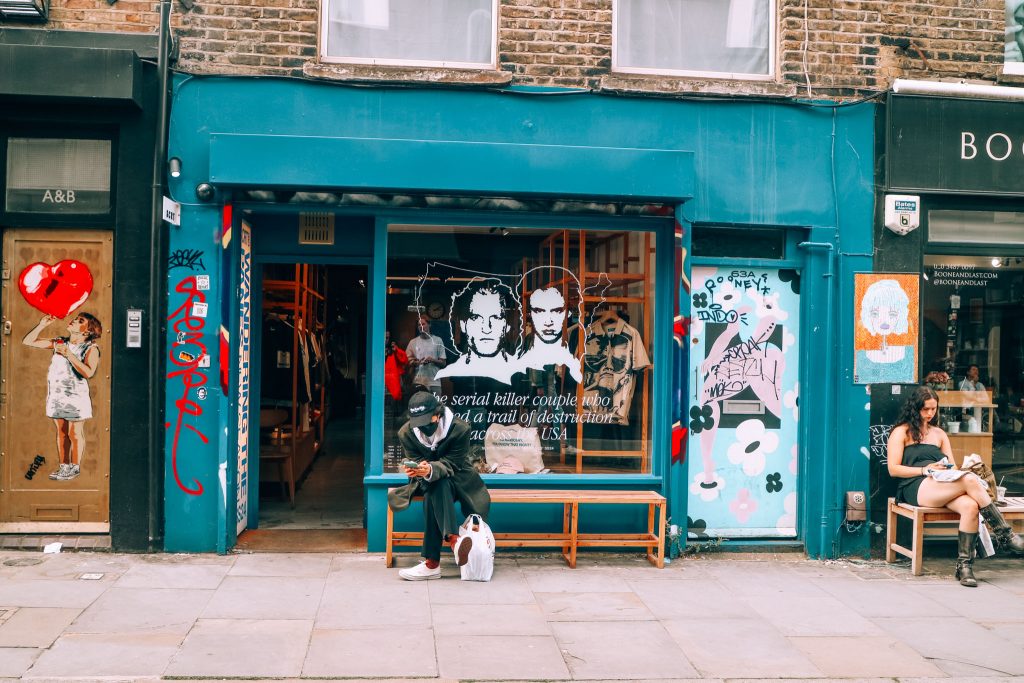
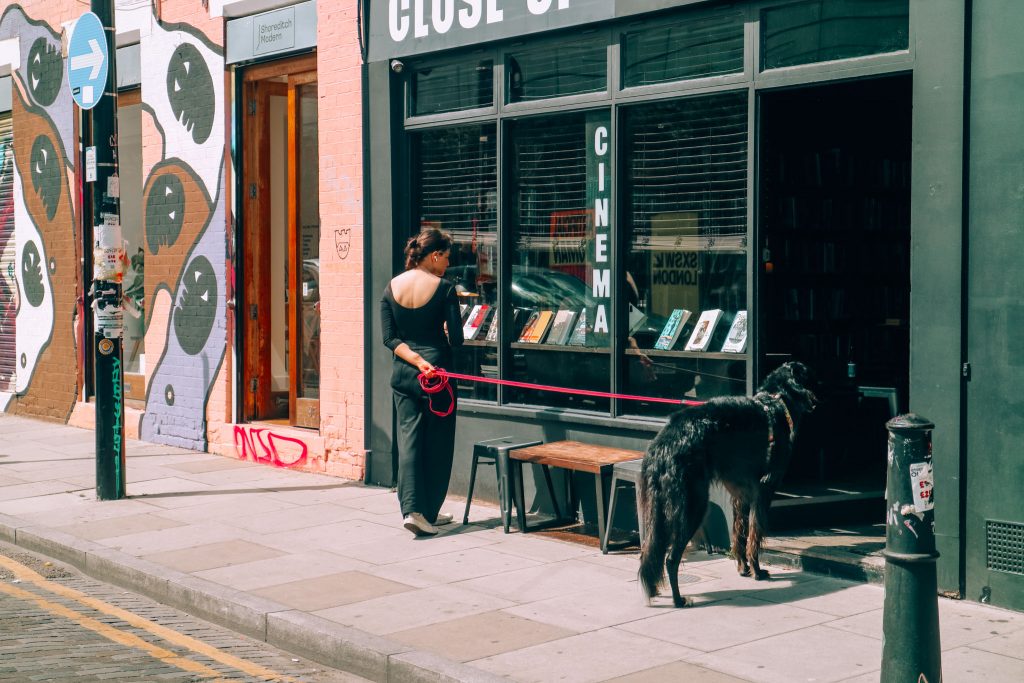
Camden Town
The second time I visited London, Camden Town stood at the top of my bucket list. Known for great street food, vintage stores and street art, at thirteen years old it felt like a place where I could find my own style and be a cool teenager. Twelve years later, I still think Camden Town is worth a visit, but you will have to look hard to find any good vintage and authentic spaces, at least at Camden Market.
Still, the place harbors an eclectic feel: a space where subcultures meet. Not surprising, considering the neighborhood’s rich history. While the Earl of Camden meant to build housing for the middle and upper-class families of London, creating a rich suburb, the emergence of the railways and the Regent’s Canal brought the Industrial Revolution to his earldom. Warehouses, factories and workshops popped up like mushrooms along the banks of the canal, and London’s working class flocked in.
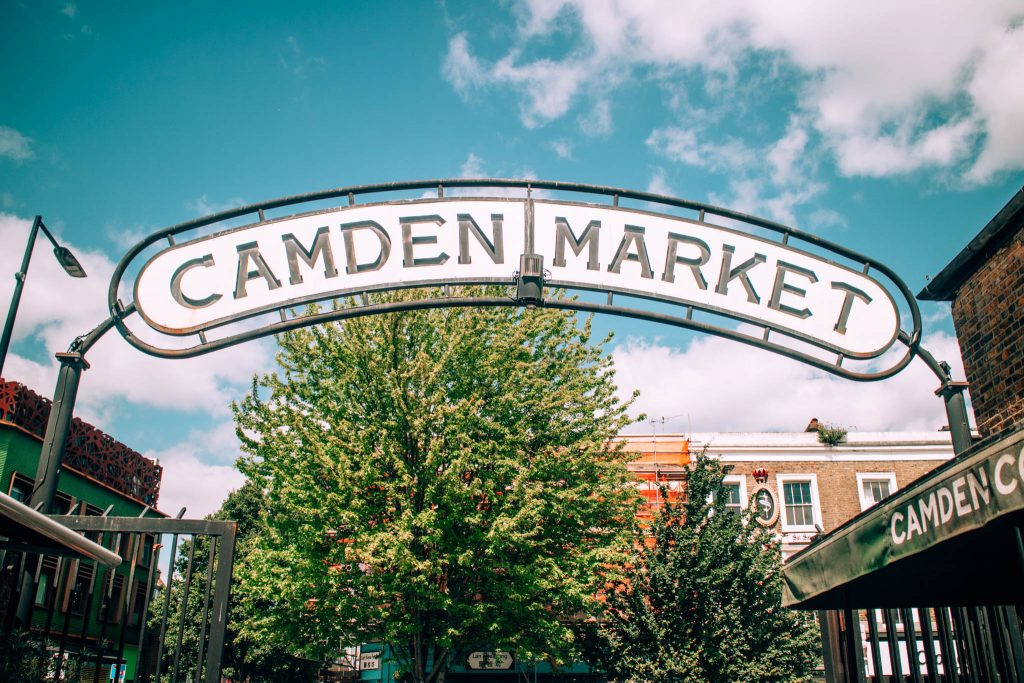
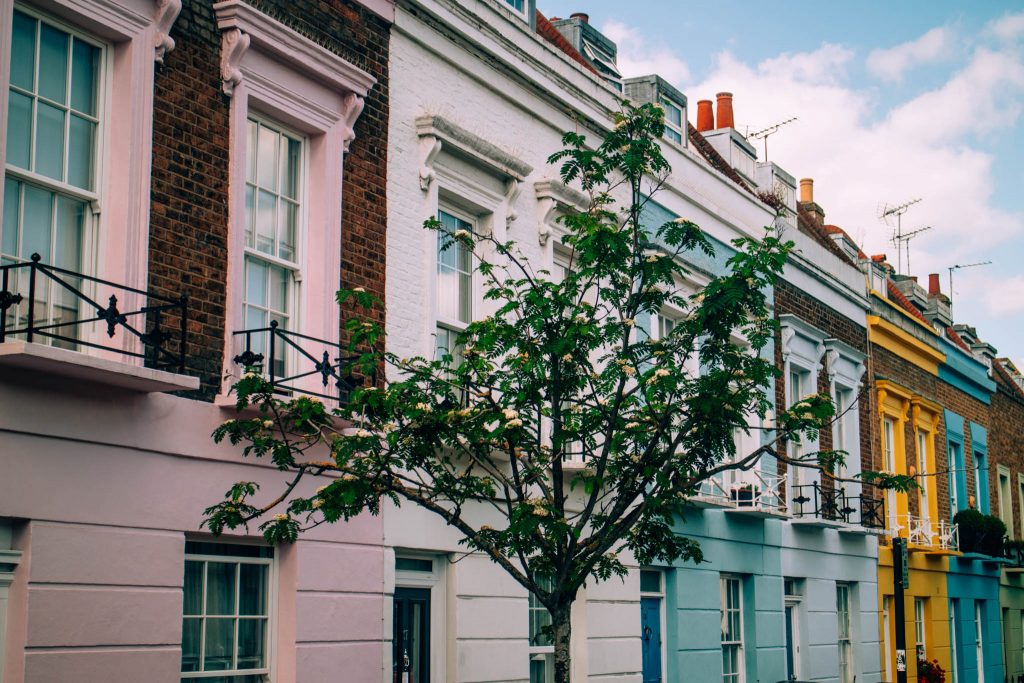
Besides becoming known for high-quality piano manufacturers and gin distilleries, the place sported a vibrant public scene, where workers got together after work in the many pubs. During the 60s, Camden Town started to attract artists, musicians and other creative folk who craved self-expression: rock, psychedelia and punk have roots here. This meant that Camden Market became home to many odd traders, and while its stones and colors still breathe the diversity of ages past, the market is now home to tourist shops where Harry Styles or Taylor Swift look at you from the backs of cheap denim jackets.
For the history and the great food, Camden is still worth a visit. Even though it can get very busy during tourist season, you will find its authentic history hidden away in corners and sounding through speakers at concert venues. I recently wrote an article about the best places to get gluten free food in London, and the market is one of its main contenders, so make sure to read it here. If you want to find some good vintage with an urban backdrop, I would recommend Shoreditch, on which more below.
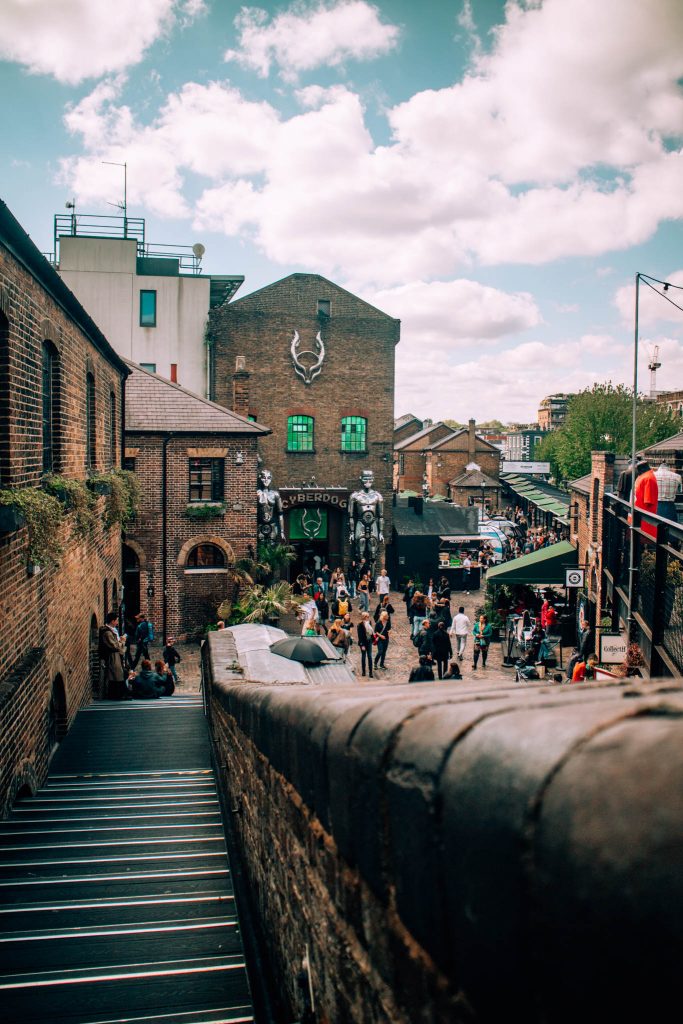
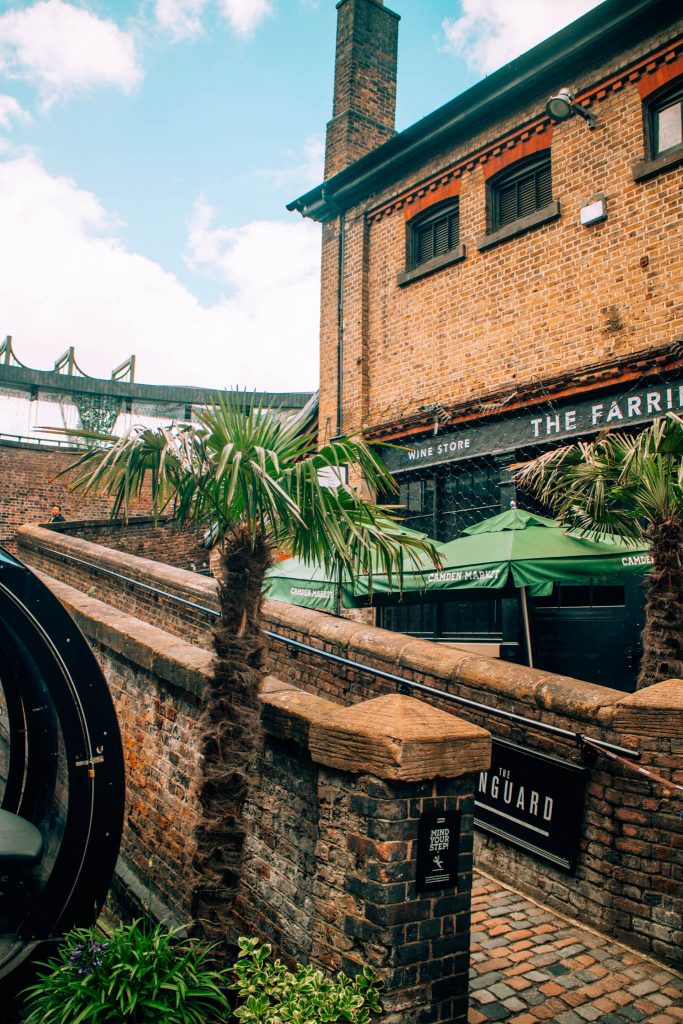
Shoreditch
Whilst walking the streets of Shoreditch, one would not think this neighborhood once was a quiet pastoral village. Valued for its tranquility, it was home to Shakespeare’s acting troupe: the Lord Chamberlain’s Men. Using the Curtain Playhouse as their base, the town quickly became a thriving theater scene, engraining the creative spark into the very bones of the once peaceful dwelling. But as with many places near big cities, the Industrial Revolution came blazing around the corner, dropping warehouses, factories and working-class homes in its wake.
These buildings still dominate Shoreditch’ cityscape with some prominent additions: after a tumultuous first half of the 20th century, the neighborhood repositioned itself as a creative hub as artists started to settle in the old warehouses and factories. Add the architectural revival of the early 21st century by modern designers, and you have got a pretty good picture of what Shoreditch looks like today.
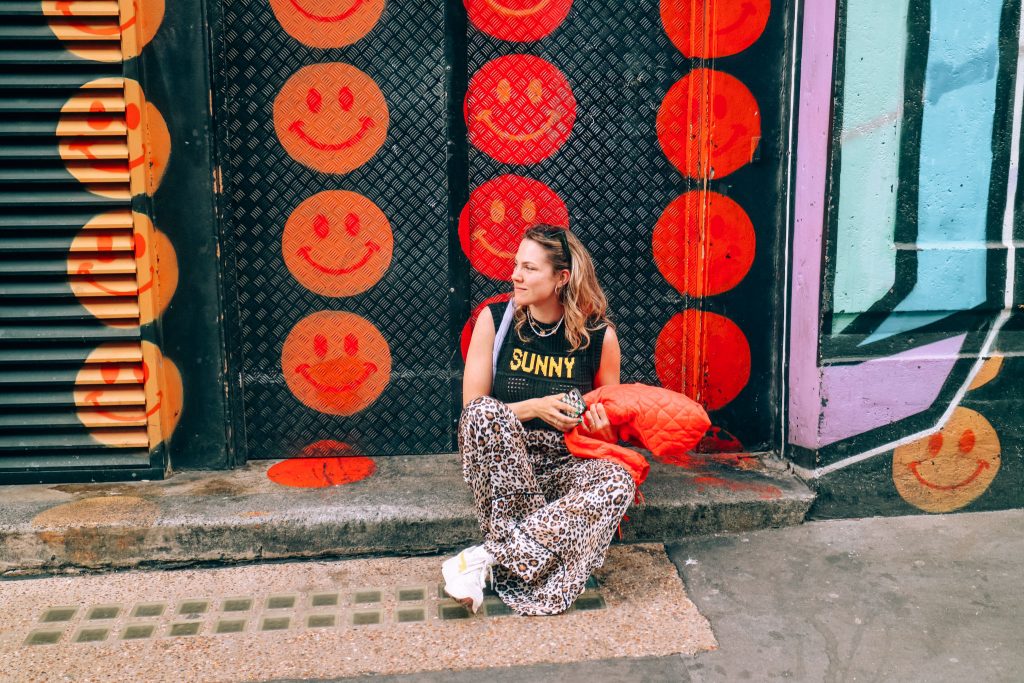
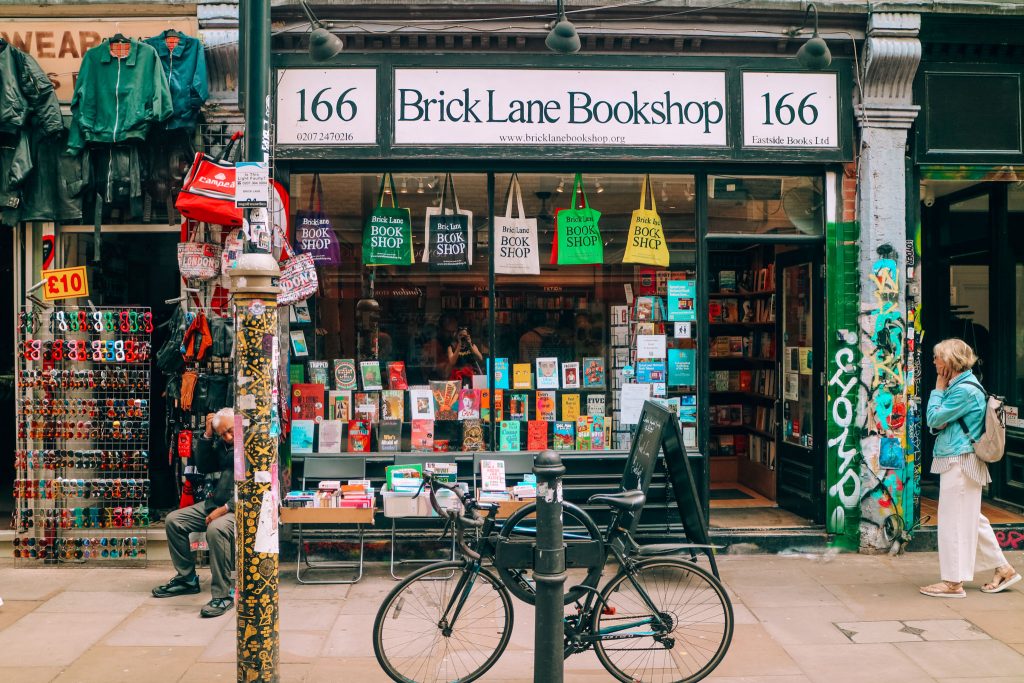
With graffiti on the walls and other street art lining the roads, I think it took me an hour to walk one kilometer as I stopped every ten seconds to take pictures. The colorful walls put a spring in my step though, and browsing around the many vintage stores on Brick Lane was a delight in itself. There were many great secondhand designer stores as well, like Nordic Poetry, so make sure to dig around yourself to find some true gems!
Besides the well-known Brick Lane, the entire area has so much to offer. From art shops to great designer stores and vibrant cafés, it felt like the Berlin of London. We had some coffee at Kahaila where several art exhibitions were on display, and Wessel bought some gorgeous linen trousers at the UK brand Folk. All in all, Shoreditch felt much more authentic than Camden Town, even though both were crowded with tourists. If I had to choose an area to live in London, besides Notting Hill, this would be it!
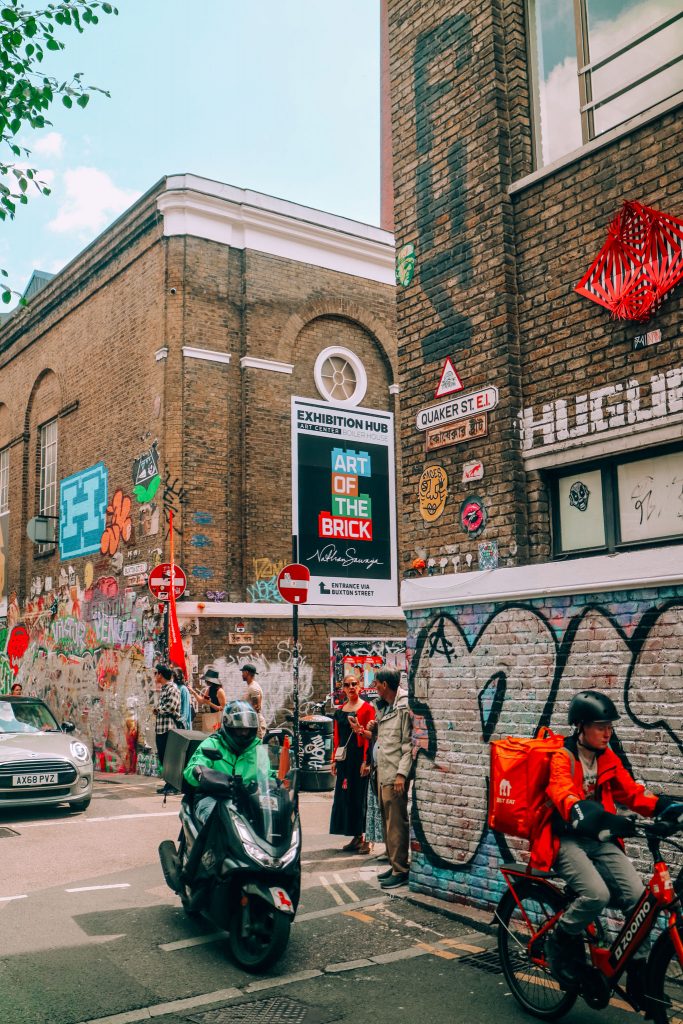
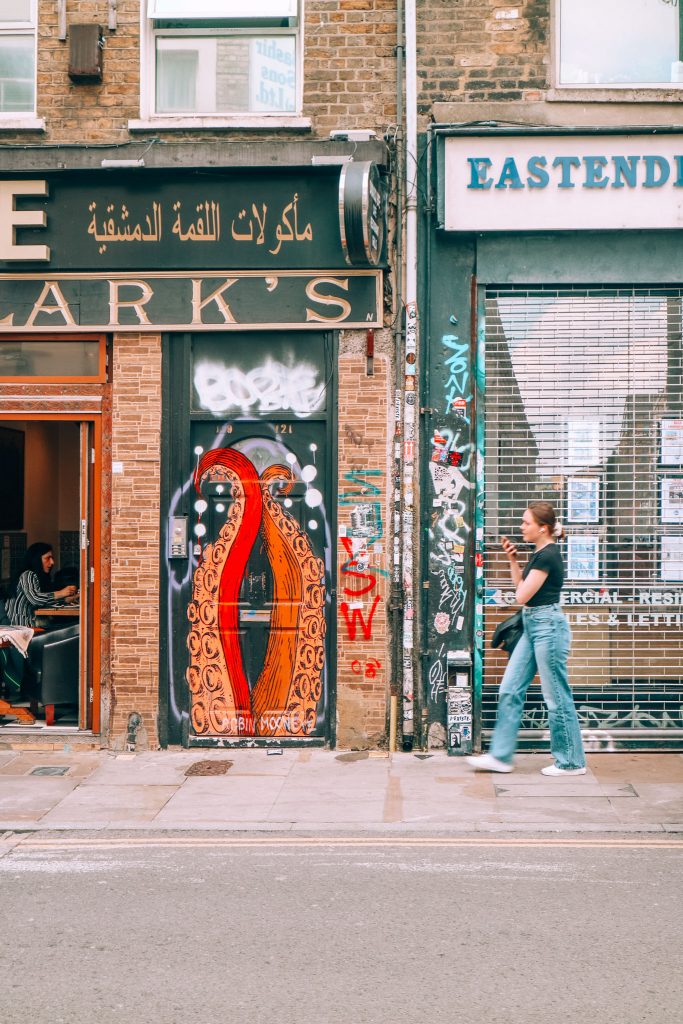
Notting Hill
Clay, pigsties, pottery smoke and open sewages: some things you would not think of when Notting Hill pops into your mind. Rather, romantic encounters on Portobello Road, the caressing of spines of dusty books in tiny bookstores and a backdrop of colorful classic houses as Hugh Grant and Julia Roberts look at each other longingly. Still, the first scene is where the famous neighborhood finds its roots, and what the city looked like up until the 18th century. Now, only one kiln, a large oven where pots and bricks were baked, remains.
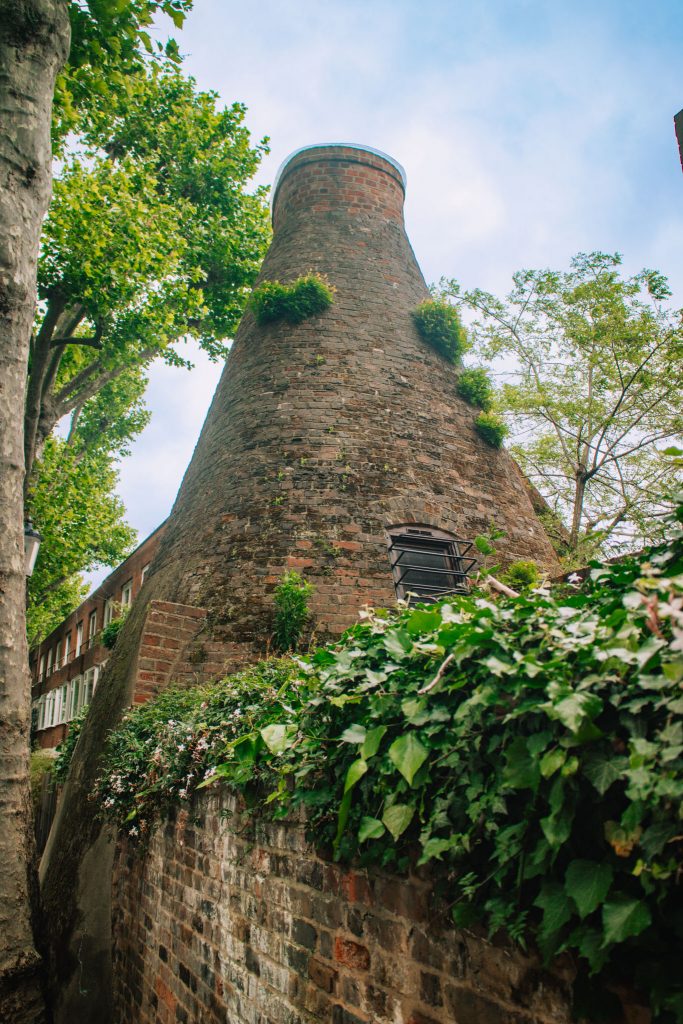
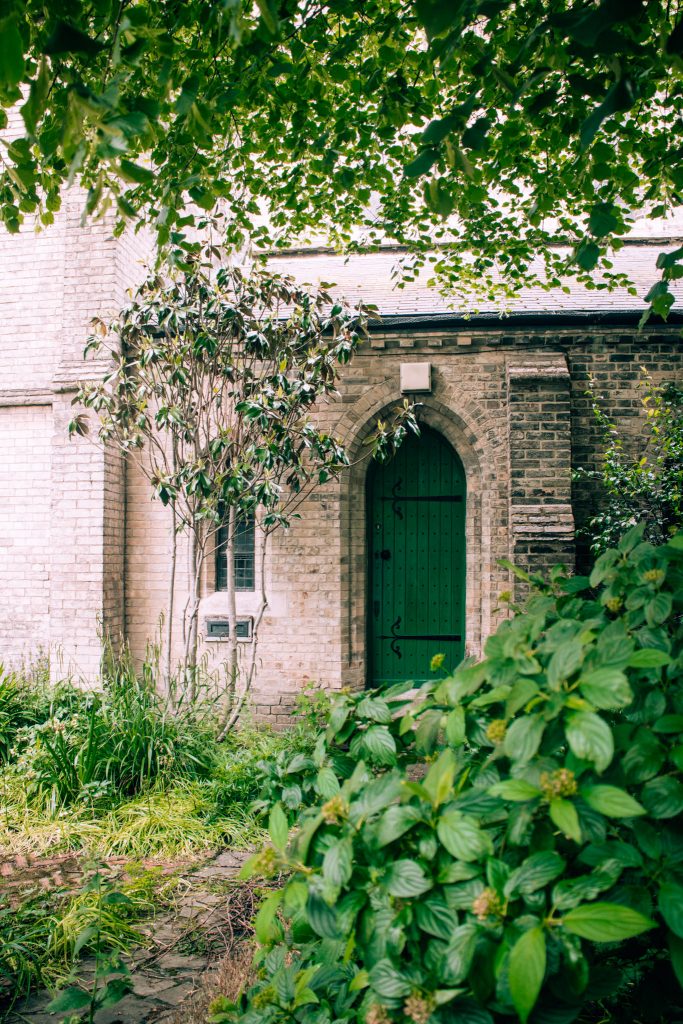
Currently, the area is filled with pretty neo-classical houses which were largely built by a wealthy landowner James Well Landbroke. This fine gentleman aimed to turn Notting Hill into a wealthy and green suburb for upper-class families. But, as with the neighborhoods mentioned before, the Industrial Revolution and later the two World Wars were the catalysts of increasing poverty and crime. The neighborhood even became known as the worst place in London, with slums, loathsome landlords, and unemployment forcing families to live in the smallest spaces possible.
Although this caused tenant rights to be improved over time, the influx of Afro-Carribean immigration, whose people took to homes in the slums, was not taken well by the poor white working-class in Notting Hill. The nineteen-fifties saw many race crimes and riots, making life unbearable for the Afro-Caribbean population. That is, until the now world-famous Carnival was brought into life by activists that sought an end to the violence. The increasing wealth and accepted diversity made Notting Hill once again a popular and picturesque destination, which led to it becoming the backdrop to its rom-com namesake.

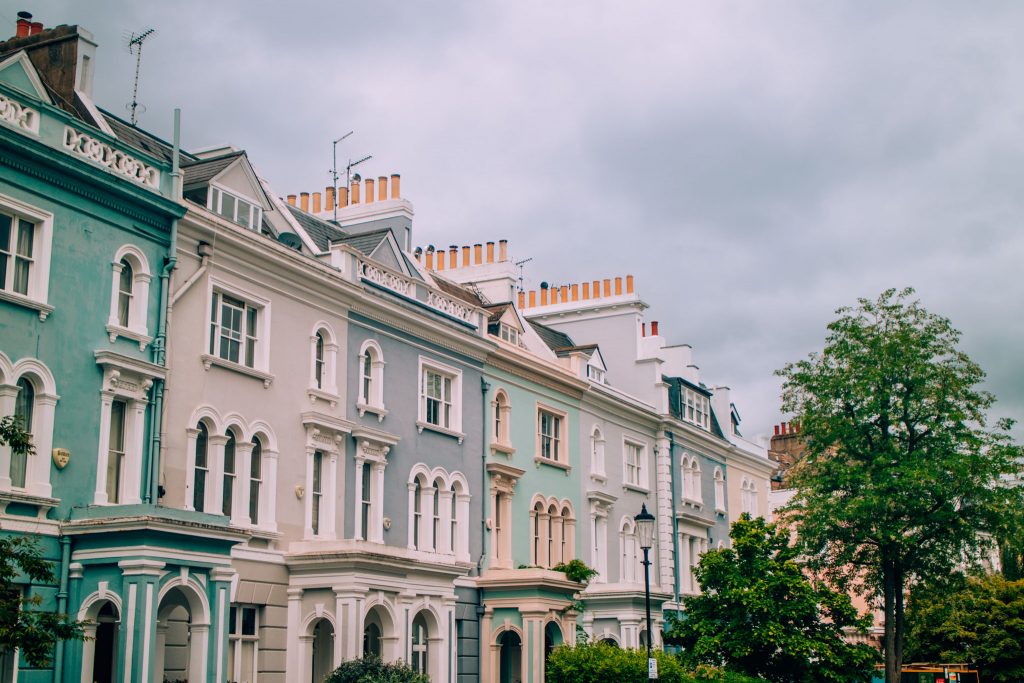
Now, Notting Hill is mainly popular among upper-class people and elites, sporting the most expensive homes in London. While this causes many problems that come with gentrification, like loss of diversity and cultural history, one cannot deny the neighborhood’s charm – which undoubtedly comes from this tumultuous and diverse history.
With Hyde Park just around the corner, many great restaurants like the gluten free Los Mochis, splendid coffee and great fashion boutiques, Notting Hill feels both trendy and historical. Besides Portobello Road and its busy market, the neighborhood is more suburban than urban, with quiet streets where locals cycle by or walk their dogs as babies coo from their strollers. You could spend a morning or evening just walking around, taking up the scenery while occasionally stopping for a coffee. As I mentioned before, I can see myself living here: with quieter areas and so many café, restaurants and local shops to choose from, it feels like a village within a metropole, which you never want to leave.
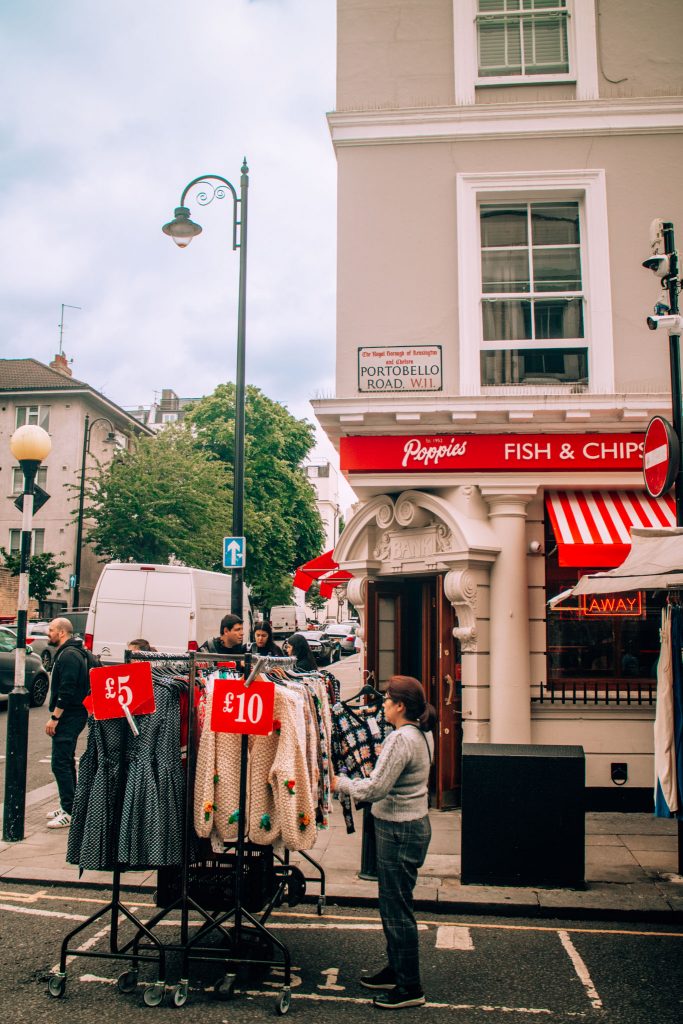
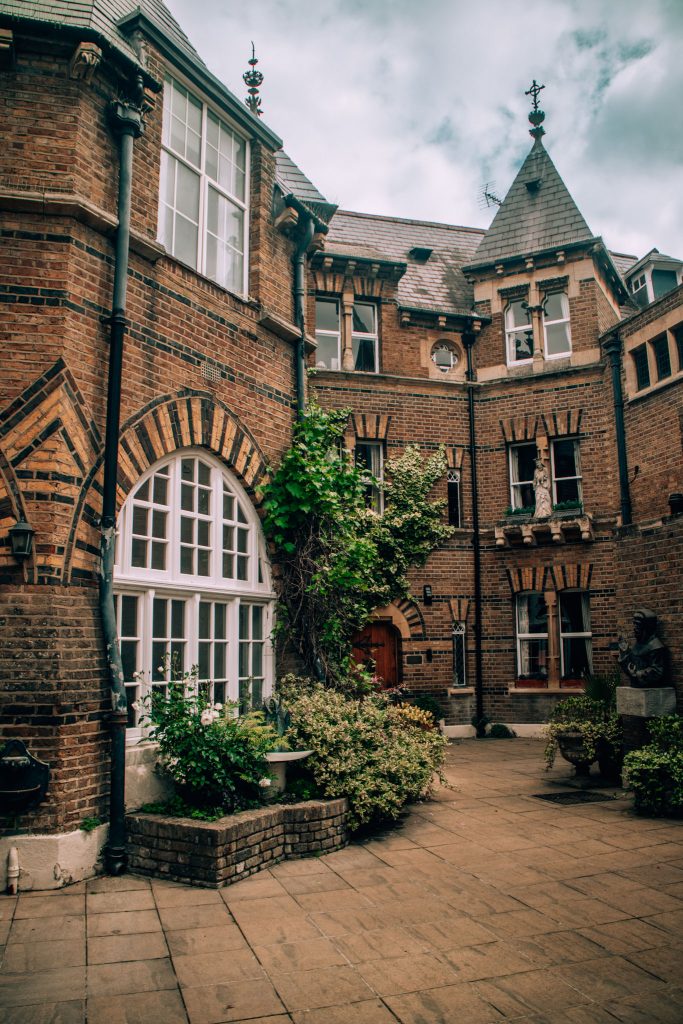
Richmond
About fifty minutes from Central London you will find Richmond, a lovely residential area that is part of the greater borough Richmond Upon Thames. Half of the area is parkland, which we could immediately tell as we departed the train station. Trees towered above the romantic houses which were framed by lush gardens with well-trimmed bushes and fragrant flowers. Every home looked like a tiny castle with its stained-glass front door, bay window and pointed roof. Our Airbnb made me feel like we were on the set of Bridgerton, but with a modern twist.
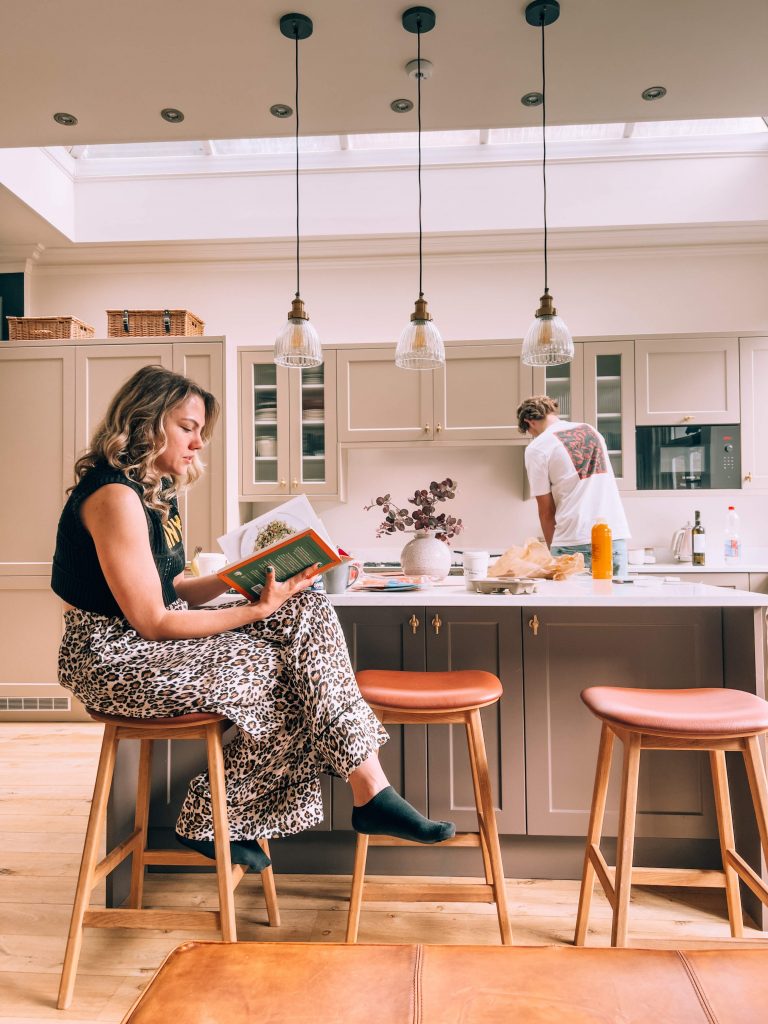
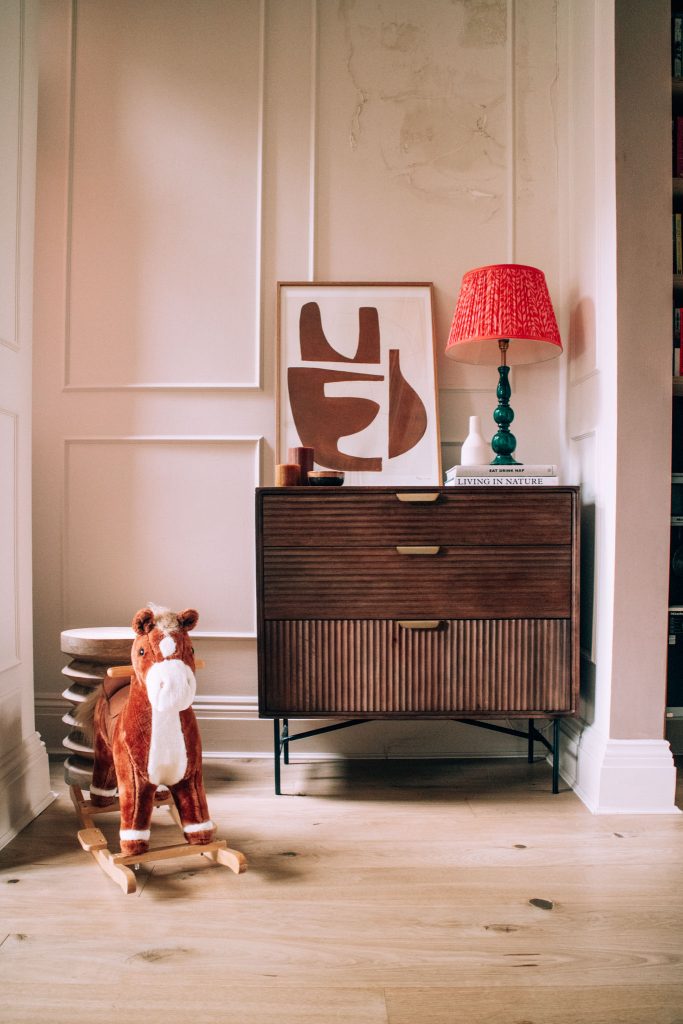
Not surprising: Richmond used to be a royal residence, frequented by Elizabeth I and Shakespeare, who performed plays at her court with his troupe. The queen fancied a good hunt here, shooting deer and boar, and even though many grand residential houses were built after the eighteenth century, Richmond is still for fifty percent filled with parkland. Kew Gardens and Richmond Park partly make up that area, and the more concrete oasis has been popular with the rich and royal for the past centuries, making it one of the more prosperous parts of (Greater) London.
I would recommend everyone to stay in this area: with Hampton Court and the great parks on your doorstep, and Central London only an hour away, it is the perfect respite from city life. Even though Richmond is part of the city, it feels like a village where time moves a little slower. One of the main reasons is probably the presence of the Thames. Framed by woodlands and small boats creeping along the water’s edges, you can both lounge besides the water in numerous cafes, or on it. You can take numerous boat tours from the area, like this one that passes Hampton Court. Book a lovely hotel or apartment here as well right here, like we did, to complete your tranquil London stay in Richmond.
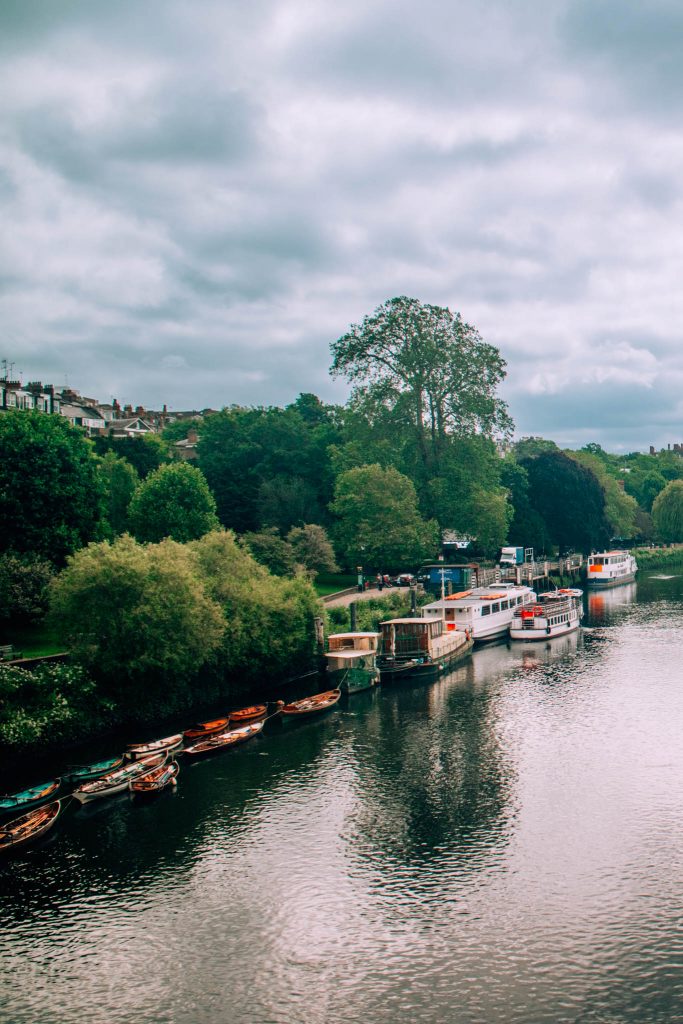
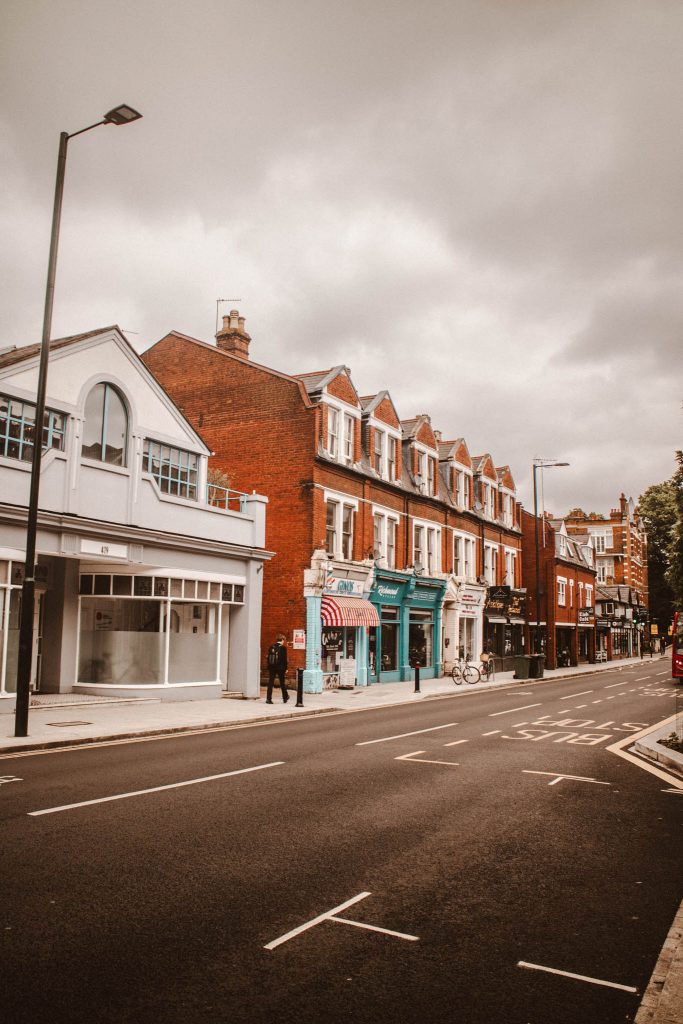
Fitzrovia and Soho
After taking you on a tour that goes around Central London, now it is time to take you to a part of its heart. At first glance, Soho and Fitzrovia appear to be shopping districts, as famous Oxford Street divides them into their two different entities. And sure, as Mayfair lies to the west and Piccadilly Circus to the south, you can expect crowds here any time of day, but still: both neighborhoods histories are fascinating.
Fitzrovia used to be London’s bohemian heart, with famous authors like Virginia Wolf and George Orwell frequenting its cafés to work on their novels. Where Soho used to be a hub for aristocrats, after a cholera outbreak said elite moved away and made space for a vibrant night life scene. Clubs and concert venues still line the areas streets, with Denmark Street nearby enough for musicians to buy their custom guitars or labels to find new talent.
Wessel had to try a few guitars on Denmark Street of course, and we explored the rest of the place mainly through our taste buds at Ottolenghi’s restaurant Rovi. They served a great gluten-free lunch and won a spot on my gluten free eats in London post. The Comedy Store, one of several great activities for a weekend in London is also very close to this part of town, so top off your day with a good laugh and a beer, and you will be able to relax those legs after a day of walking around London’s neighborhoods.
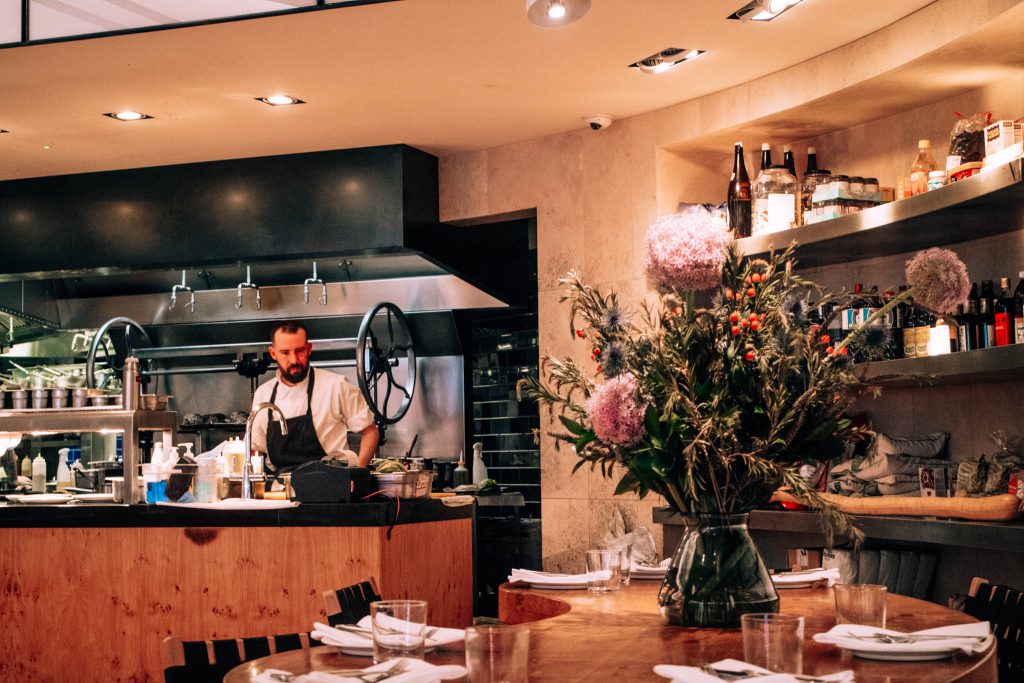
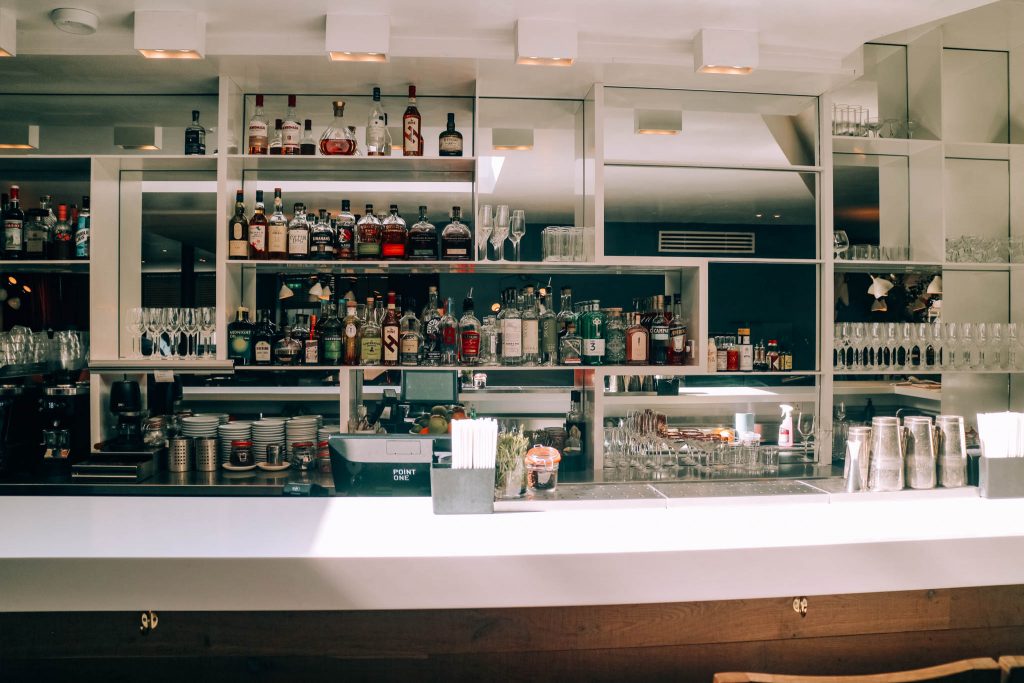
Final Thoughts
I absolutely love everything about London and would come back here every month if I could. But, if I had to pick two neighborhoods, my favorites would be Shoreditch and Notting Hill without question. Two polar opposites in nature, they both have an edgy and romantic attraction that makes you want to roam their streets into eternity. If I were to visit London again, though, and explore new neighborhoods, I would probably have two new favorites, like famous, flowery Belgravia.
And so, we come to an end to my 2024 London series. Next week I will be taking you along with me through the streets of Berlin, so keep an eye out for that article by following me on Instagram or signing up to my newsletter, through which you will get a gluten free world map, for free.




